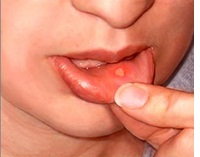Everything you need to know about Stomatitis
Stomatitis is inflammation of the mouth. It affects the mucous membranes, which are the thin skin coverings on the inside surface of the mouth. The membranes produce the protective mucus, as well as lining the digestive system, from the mouth to the anus.
Stomatitis is a type of mucositis, a condition defined as pain or inflammation of the mucous membrane.
Mucositis is a relatively common side effect of chemotherapy and sometimes radiotherapy. It can affect the inside of the lips, cheeks, gums, tongue, and throat.
Stomatitis that reoccurs and includes mouth ulcers is called recurrent aphthous stomatitis (RAS) and is the most common disease affecting the mouth area, with around 5-25 percent of the United States population affected in some way.
Types
There are two main types of stomatitis:
Canker sores:
These are also known as aphthous ulcers and are part of the most common cause of stomatitis. The sores are pale white or yellowish in color with a red outer ring.
Canker sores can develop singly or in a cluster and usually occur on the inside of the lips or cheek, or on the tongue.
Canker sores lead to acute, temporary pain. In minor cases, which are the most usual, the ulcers heal within 4-14 days. In more severe cases, which account for about 1 in 10 of all cases of stomatitis, the sores can last up to 6 weeks.
Anyone can get canker sores, although women and people in their teens and 20s are more likelyto experience them. They can run in families but are not contagious.
Cold sores
Cold sores are small, painful, fluid-filled sores that usually occur on or around the lips near the edge of the mouth. Caused by the herpes virus (HSV), the condition is also known as herpes stomatitis.
A person may experience a tingling or burning sensation before the sore appears, as well as tenderness. Cold sores dry up and crust over with a yellow-colored scab.
Cold sores tend to last for around 5-7 days and can keep coming back. They are also very contagious.
Stomatitis can be broken down into different categories, depending on which area of the mouth is affected:
- cheilitis - inflammation of the lips and around the mouth
- glossitis - inflammation of the tongue
- gingivitis - inflammation of the gums
- pharyngitis - inflammation of the back of the mouth
Kids Dental
- When should we visit pediatric dentist?
- How to take care of baby's baby teeth?
- When do baby teeth erupt?
- Best drinks for children
- Benefits of Visiting the Dentist from a Young Age
- Dental Health For Kids: A Parent's Guide
- How To Prevent Toddler Tooth Decay
- Dentist Appointment Anxiety: 3 Ways To Alleviate Your Child's Fears
- Kids Dental
- Everything you need to know about Stomatitis